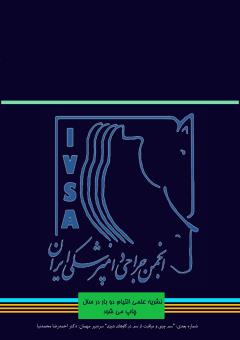Induction of septic peritonitis with laparoscopic assisted cecal ligation and cauterization (CLC) in rabbit
Subject Areas : Veterinary Soft and Hard Tissue SurgeryMahdieh Katebian 1 , Mir Sepehr Pedram 2 , Majid Masudifard 3 , mehdi nasiri 4
1 - Tehran University
2 - veterinary university of tehran
3 - NO
4 - veterinary university of tehran
Keywords: Laparoscopy, Peritonitis, CLc, rabbit,
Abstract :
Sepsis is a complex and dynamic syndrome and it is a medical and economic challenge. To learn more about pathophysiology of this syndrome, animal models have been introduced. Poly microbial sepsis induced by cecal ligation and puncture is the gold standard model of this condition. The purpose of this study was introducing a new method of septic peritonitis with laparoscopic assisted cecal ligation and cauterization (CLC) in rabbit model. This study included two groups of adult male New Zealand white rabbits: Control group (4rabbits): exploratory laparoscopy was performed and the cecum was grasped from the distal of ileocecal valve using an atraumatic forceps and pulled out from the trocar entry site. CLC group (4 rabbits): the cecum was ligated and two sites of cecum were cauterized from antimesenteric to mesenteric surface of cecum. Before and during 24 hours after the operation, heart rate, rectal temperature and respiratory rate of rabbits were monitored. Ultrasonography, CBC, peritoneal fluid analysis and bacterial culture was checked 24 hours after the surgery. Statistical analysis of the data in CLC group rabbits showed a significant increase in heart rate 6 and 18 hours after surgery (tachycardia) and increase in respiratory rate from 6 to 24 hours after surgery (tachypnea). In addition, a significant decrease in glucose of serum was observed. Bacterial culture was positive and peritoneal analysis of all rabbits in CLC group indicated the presence of bacteria and infection.


